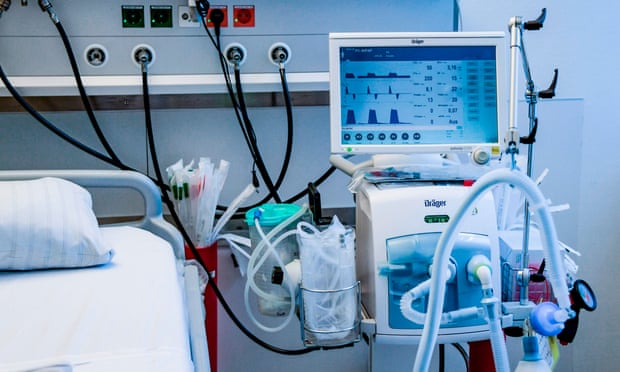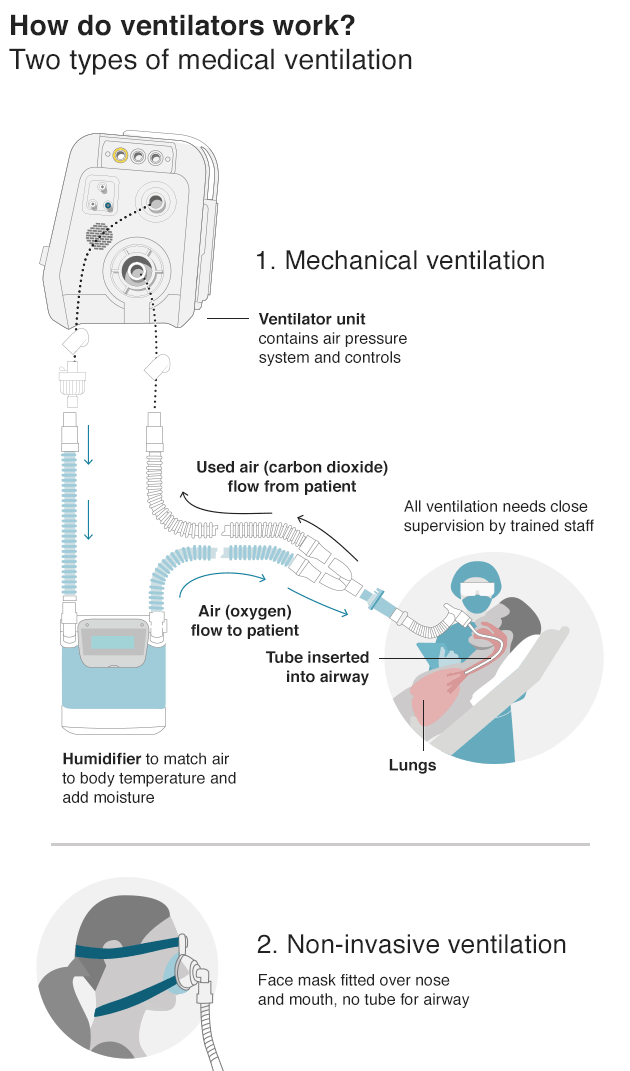
What is a ventilator and what does it do?
Simply put, a ventilator takes over the body's breathing process when disease has caused the lungs to fail.
This gives the patient time to fight off the infection and recover.
Various types of medical ventilation can be used.
A mechanical ventilator is a machine that’s used to support patients with severe respiratory disease that impact the lungs, that include pneumonia.
Before a patient is placed on a ventilator, often anaesthetists – will perform a procedure called intubation.
After a patient is sedated and given a muscle relaxant, a tube is placed through the mouth and into the windpipe.
Day says the procedure is routine but, with Covid-19 patients, medical staff need to take extreme precautions to make sure they do not become infected with the virus.
“We have people almost in full hazmat suits,” he says.
The breathing tube is then attached to the ventilator and medical staff can adjust the rate that it pushes the air and oxygen into the lungs, and adjust the oxygen mix.

